Before twirling the pages and facts about angiography procedure, let’s see briefly, some aspects of angiography.
What do you think of angiography ?
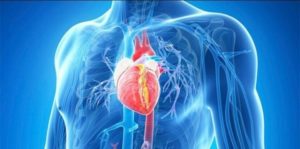
Angiography is the x-ray or radiographic study of the blood vessels. The images yielded during angiography> procedure are simply known as angiograms.
An angiogram uses a radiopaque substance, or contrast medium, to make the blood vessels visible under x- ray.
An angiogram can show if coronary artery disease is present and how bad it is. It generally finds a bulge in a blood vessel (an aneurysm). It can also show narrowing or a blockage in a blood vessel that may be proved harmful for blood flow.
Here are few images of angiograms:
Image 1
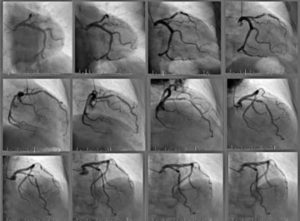
Image 2

What is the need ?
Generally, a patient having problems with circulation, is advised to undergo angiography. It is used to detect arterial disease which may lead to bad health conditions, such as stroke, heart attack, gangrene and organ failure. A tear in blood vessel causing blockage or internal bleeding, aneurysms (weaknesses in the blood vessel wall) etc. are the problems which are detected with the help ofangiography.
The most common reasons why one undergoes the angiography are:-
- To look for the changes in the blood vessels of damaged organs.
- To check how bad atherosclerosis is in the coronary arteries.
- To confirm the condition, number, and location of renal arteries before a kidney transplant.
- To know the source of bleeding.
- To see the pattern of blood flow to a tumor.
- To diagnose heart diseases, to detect kidney cysts and tumors
- To detect problems with the retina.
Procedure of Angiography :
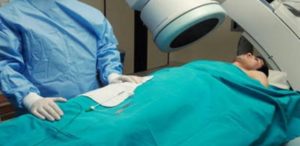
We can divide this part into three sections:-
- Before angiography (Precautions)
- The actual process
- After angiography (Recovery)
Before angiography :
Before an angiogram, you are supposed to brief about your health history. Do tell your doctor if you have any condition from below:-
- If you are pregnant or you are breastfeeding. Are breastfeeding. Use formula (throw out your breast
milk) for 1 to 2 days after the angiogram until the dye has passed from your body. This generally takes 24
hours. - If you are allergic to iodine dye which is used in the test.
- If you have ever had a serious one allergic reaction.
- If you have asthma
- If you are allergic to any medicines.
- If you have any of kidney problems or diabetes, especially if you take metformin (such as Glucophage) to control your diabetes.
Well the thing is that, the dye used during an angiogram can cause kidney damage in people who have poor kidney function.
- The test may take several hours, so you will empty your bladder just before it begins.
Also before the angiogram, you may have other blood tests, such as blood clotting (coagulation) studies, blood urea nitrogen (BUN), and creatinine.
The actual process :
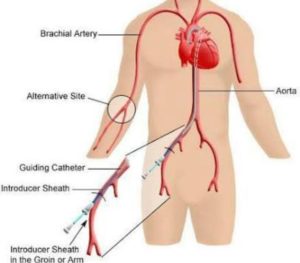
First of all, a small cut is made in the skin over one of your arteries, usually near your groin or just above the elbow. Anesthesia is used to numb the area.
A thin and flexible tube called catheter is placed into a blood vessel in the femoral artery. The catheter is directed towards the area to be inspected. You may feel pressure in the blood vessel as the catheter is moved. Then an iodine dye is injected into the vessel to make the area show clearly on the X-ray pictures.You may feel some warmth when the dye is put in. This feeling lasts only a few seconds. And the method is generally known as catheter angiogram.
Sometimes inserting a balloon or a small tube to open up a narrowed artery is carried out. This is known as angioplasty.
Once you are done with the procedure, the catheter is removed and pressure is placed on the cut to stop any bleeding. Stitches are not needed.
Recovery :
After the test, you may have some tenderness and bruising at the site where the catheter was inserted. Then, you’ll be taken to a recovery ward where you will be asked to rest for few hours. There is no need for hospital stay in the case of angiography. On the same day, you are permitted to leave for the home. The X- ray results are always needed to be studied in detail. So the results will be available after few days.
Do not forget to drink plenty of water. It may help you to flush out the contrast dye from your body in your urine. Also, avoid heavy lifting and strenuous exercise for few days. And for the rest of the routine, you can follow your regular works and activities.
Few types :
A magnetic resonance angiography (MRA) or computed tomography angiography (CTA) may be an option instead of an angiogram. Each of these tests is less invasive than a standard angiogram.
Cerebral angiography :

Cerebral angiography is used to detect aneurysms, stenosis, blood clots, and other vascular irregularities in the brain.
X ray showing a brain aneurism (to the right of the midline. Image credit:- CNRI/National Audubon Society Collection/Photo Researchers, Inc. )
Coronary angiography :
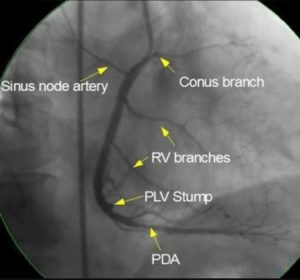
Coronary angiography is administered by a cardiologist with training in radiology or, occasionally, by a radiologist.
(Angiogram of coronary angiography)
Pulmonary angiography :
Pulmonary, or lung, angiography is performed to evaluate blood circulation to the lungs.
Fluorescein angiography :
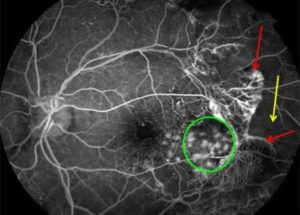
Fluorescein angiography is used to diagnose retinal problems and circulatory disorders.
Any risk factors?
Usually, there always come some risks with any substance. Here, the chances are low of any problem from angiography but there are few cases of problems which one should not ignore. Moreover, if the problem occurs during the angiography, the test may not be completed. You may need urgent treatment that could include surgery. But, this probability is negligible.
But, few more risks factors are there like:-
- The iodine dye used for the test can cause water loss or direct damage to the kidneys. This is a special concern for people who have kidney problems, diabetes, or who are dehydrated.
- A chance of an allergic reaction to the iodine dye. But, most reactions can be treated with medicines.
- A very small chance of damage to cells or tissue from being exposed to any radiation.
- There is a little chance that the catheter may damage a blood vessel.
- Bleeding from the needle site may occur.
- A blood clot can form where the catheter was inserted, which may cause some blockage of the blood flow in the arm or leg.
Results
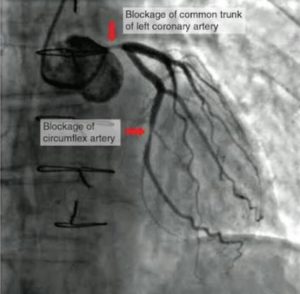
Either the reports of your x-rays are normal or abnormal. Now, what happens in both of the cases? Let’s see.
Normal angiograms:
This means that your blood vessels are normal in shape, size, location and number. This may also include that dye flows evenly through your blood vessels. And be relax as there is no narrowing, blockage, bulging, or other problem of vessels.
Abnormal angiograms:-
- A bulge in a blood vessel means a weakness in the blood vessel wall (aneurysm).
- Blood vessels which are not in their appropriate positions and an abnormal pattern of blood vessels may sign towards a tumor.
- A narrow spot in an artery means that a fat deposit, calcium deposit, or clot is reducing blood flow through the blood vessel.
- Dye that leaks out of a blood vessel indicates a hole in the blood vessel.
Before coming to the end, it should be cleared that, heart diseases, kidney failures, tumors and many life taking diseases are becoming your partners. The reason is, avoiding the importance of health. One cannot throw off the soul from a body without any reason. And these diseases just are those reasons. Understand this and take few steps ahead for your good health.
Here is attached a video link to clear doubts about angiography :-
https://youtu.be/kY5gKdFWT3k
